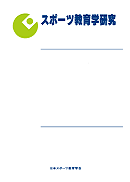30 巻, 2 号
選択された号の論文の10件中1~10を表示しています
- |<
- <
- 1
- >
- >|
原著論文
-
2011 年 30 巻 2 号 p. 1-10
発行日: 2011/03/30
公開日: 2013/08/10
PDF形式でダウンロード (1528K) -
2011 年 30 巻 2 号 p. 11-25
発行日: 2011/03/30
公開日: 2013/08/10
PDF形式でダウンロード (1313K)
実践報告
-
2011 年 30 巻 2 号 p. 27-37
発行日: 2011/03/30
公開日: 2013/08/10
PDF形式でダウンロード (1378K)
基調講演
-
2011 年 30 巻 2 号 p. 39-50
発行日: 2011/03/30
公開日: 2013/08/10
PDF形式でダウンロード (1346K) -
2011 年 30 巻 2 号 p. 51-62
発行日: 2011/03/30
公開日: 2013/08/10
PDF形式でダウンロード (135K) -
2011 年 30 巻 2 号 p. 63-72
発行日: 2011/03/30
公開日: 2013/08/10
PDF形式でダウンロード (363K)
シンポジウム
-
2011 年 30 巻 2 号 p. 73-76
発行日: 2011/03/30
公開日: 2013/08/10
PDF形式でダウンロード (80K) -
2011 年 30 巻 2 号 p. 77-88
発行日: 2011/03/30
公開日: 2013/08/10
PDF形式でダウンロード (246K) -
2011 年 30 巻 2 号 p. 89-94
発行日: 2011/03/30
公開日: 2013/08/10
PDF形式でダウンロード (97K) -
2011 年 30 巻 2 号 p. 95-101
発行日: 2011/03/30
公開日: 2013/08/10
PDF形式でダウンロード (106K)
- |<
- <
- 1
- >
- >|
